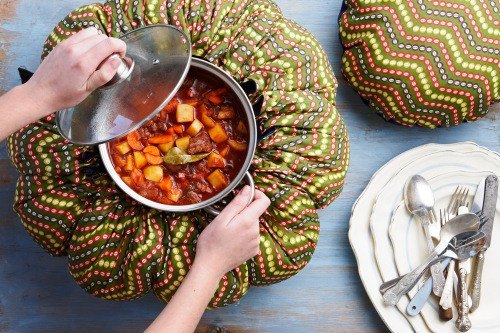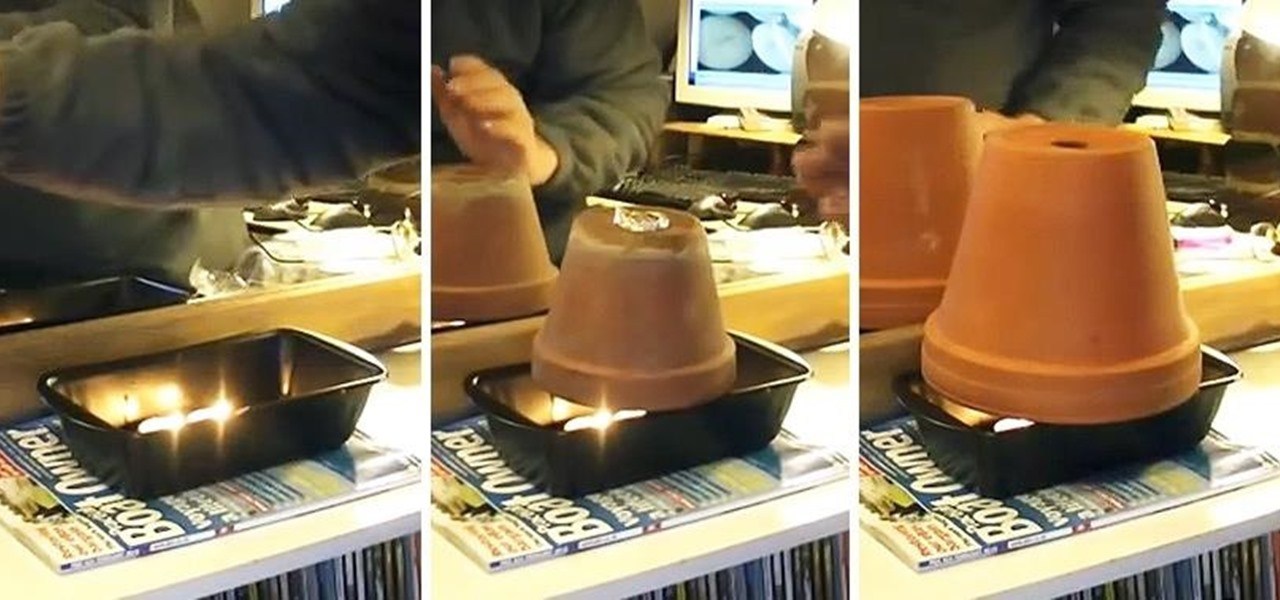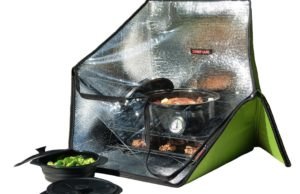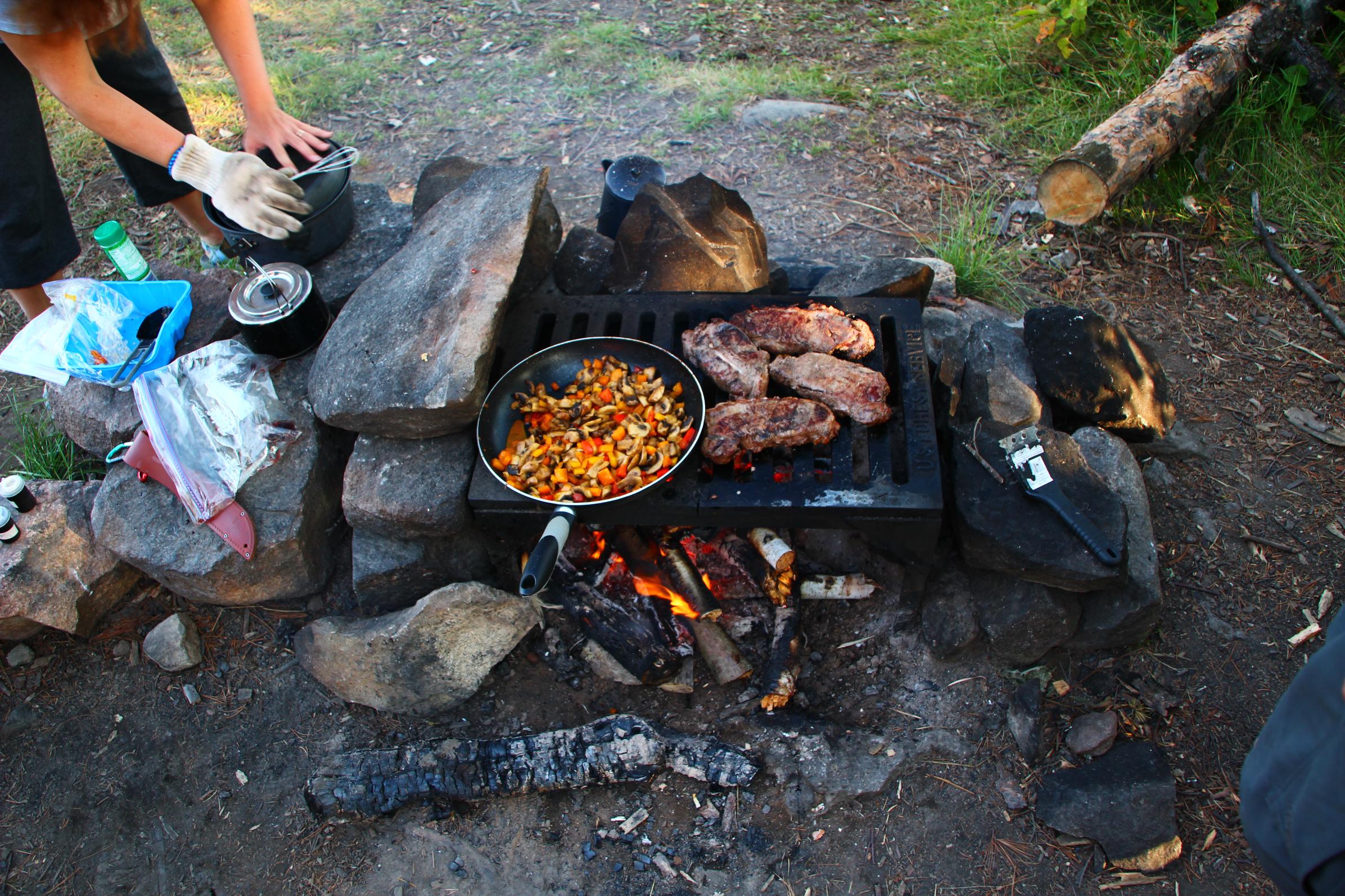
In a protracted crisis, we’ll be missing a lot of our usual conveniences. While some may already make their own sandwich bread for slicing and render their beef and hog tallow, a lot of folks don’t. Early on, a lot of folks may not yet have the time or energy to do so, and some may be torn between cookware and grinders, dehydrators, saving for a move, and stocking up on food and water supplies, along with all the rest that goes along with preparing for disasters big and small, personal to global.
Having options for cooking that are typically inexpensive and-or easily acquired can open up options for what we store, whether we’re new or experienced. Thinking through what we prepare food in can save us labor in various ways. Both can help us prioritize for purchases moving forward.
Ovens & Stove-tops
The advantages of the clay ovens come from not heating the house, but also from being able to use a single “burn” to cook a number of dishes. James Townsend & Sons have several videos using and making clay ovens, and he’s nice enough to go through the progression of dishes used in the latter half of the video in this one.
Another type of cooker that limits the amount of heat we have to produce and fuel we have to burn is a purchased or homemade WonderBag or a wonder box cooker. They basically take any ceramic, cast iron or steel pot and turn it into a crock pot/slow cooker. All we have to do is burn enough to bring it to a boil.
They don’t work that well on kidney beans that really do have to simmer for a while, even after a pre-soak and a pre-boil, but they work on most other beans, lentils and grains, even the ones like wheat and barley that resist softening sometimes. (If doing beans, simmer them in a “fast soak” method first.)
It can take a little while to figure out timing and liquids with both WonderBags/Boxes and solar ovens, but the same is true of a regular crock-pot, too.
You can get complicated with mirrors, black paint and larger clear containers to go over them or you can go simple and just stick glass pickle and pasta sauce jars that aren’t really appropriate for home canning and have some nice size to them in a black bag in the sun.
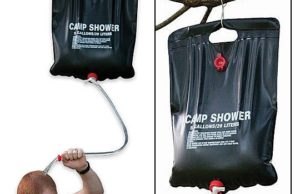
Image: A pickle or spaghetti jar of water and grains or pre-simmered beans can be hung in any black bag, to absorb heat like a solar camp shower and decrease the need to burn fuel for cooking.
The times of year the glass-jar option are good for are somewhat limited to mid-spring through autumn, but even when food’s not getting piping hot, soaking in jars in the sun can help limit the amount of time it takes prepare food.
Sticking water in black jars or jars in black bags, pots inside bags, or systems as simplistic as a pot inside a tire and under a window pane are also great ways to just heat water. That water can then be used for tea, coffee, instant foods, to get a head start on the time it takes to boil or simmer water over fires, or for washing up.
The last cooking method are all the many varied types of candle cookers and space heaters, from the clay pots to the trays of tea lights, and even using standard emergency candles or Crisco candles inside a home oven (where the cracked oven retains some of the heat and makes them more efficient).
*Please use bricks or a bread pan plus bricks, or an overturned brownie pan as a base for candle-clay pot heaters and cookers, not skinny little tubes that will shimmy and fall.
I just don’t see them in off-grid cooking methods all that often, so they bore repeating. They do use a consumable, either Crisco or candles, but they create options, especially for those in urban and some suburban areas, rental homes, or very small homes. They also provide us with an additional backup, especially for times we don’t want to go outside, produce much smoke, or create a great deal of heat in summertime.
Non-Fire Cooking Methods
There are a couple of shared advantages to the non-fire cooking methods listed here and in other articles.
One, they’re infinitely and easily renewable, which lets us save non-renewable (or very slowly renewable) and labor-intensive fuels for the seasons where the sun isn’t going to be much help.
Two, they lessen the labor. If we’re only hauling enough wood for a rocket stove or to bring food to a boil, we’re spending less time and energy than if we needed more fuels to cook over directly. That can let us concentrate on producing food to cook and can, and on replacing and stockpiling fuels for when we want them for heat.
Three, while food scent carries – more than you might imagine if you’ve never done long-range packing or been in isolated areas, or just hungry as you pass Fast Food Row – charcoal and wood smoke carries even further. And with a few exceptions, wood smoke can leave a visual trail as well.
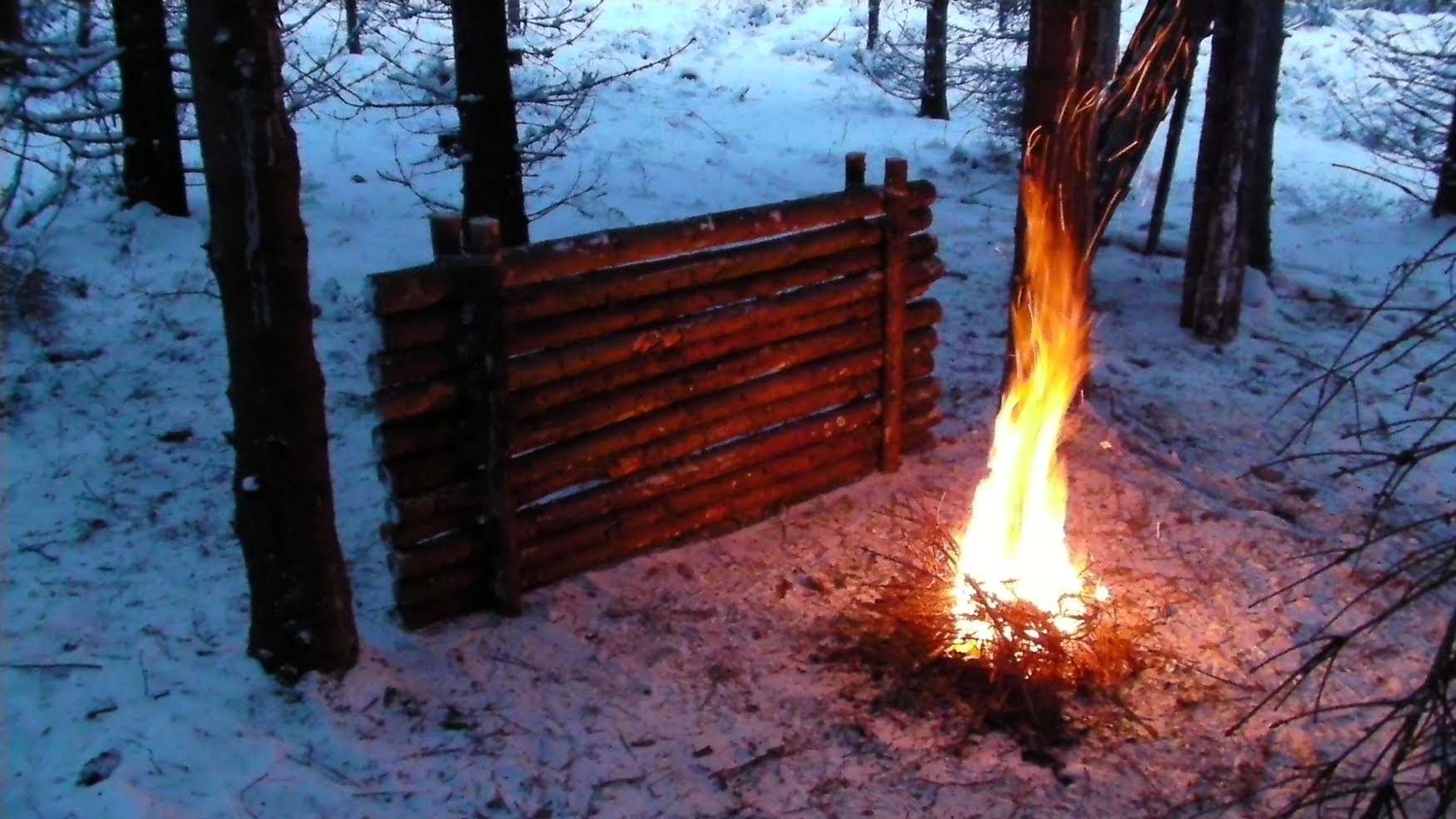
Thermal Mass & Reflectors
If you’re a woods-survivalist or a through-packer, you’ve probably heard of the concept of a reflector for fires in an emergency, or of creating a mound or even a loose screen as a wind break in front of your shelter entrance even if you aren’t going to have a fire.
The goal there is to help us stay warm. It either blocks and diffuses wind, which will eddy through and carry our heat away even in a small shelter, or it helps bounce warmth back.
There’s also the thermal mass and insulation theory from survival and backpacking folds. If you build a thicker debris hut or lean-to, you tend to stay warmer, just like you can find a sun-warmed stone bank to put your back against if you’re in the right territory, and it helps by holding onto the heat longer in the day.
Those two are the same theories as are applied to the idea of using a Dakota pit to cook in, as well as the WonderBag and similar slow-cooker methods, and Thermal Mass Heaters that have a cook-pot basin built-in.
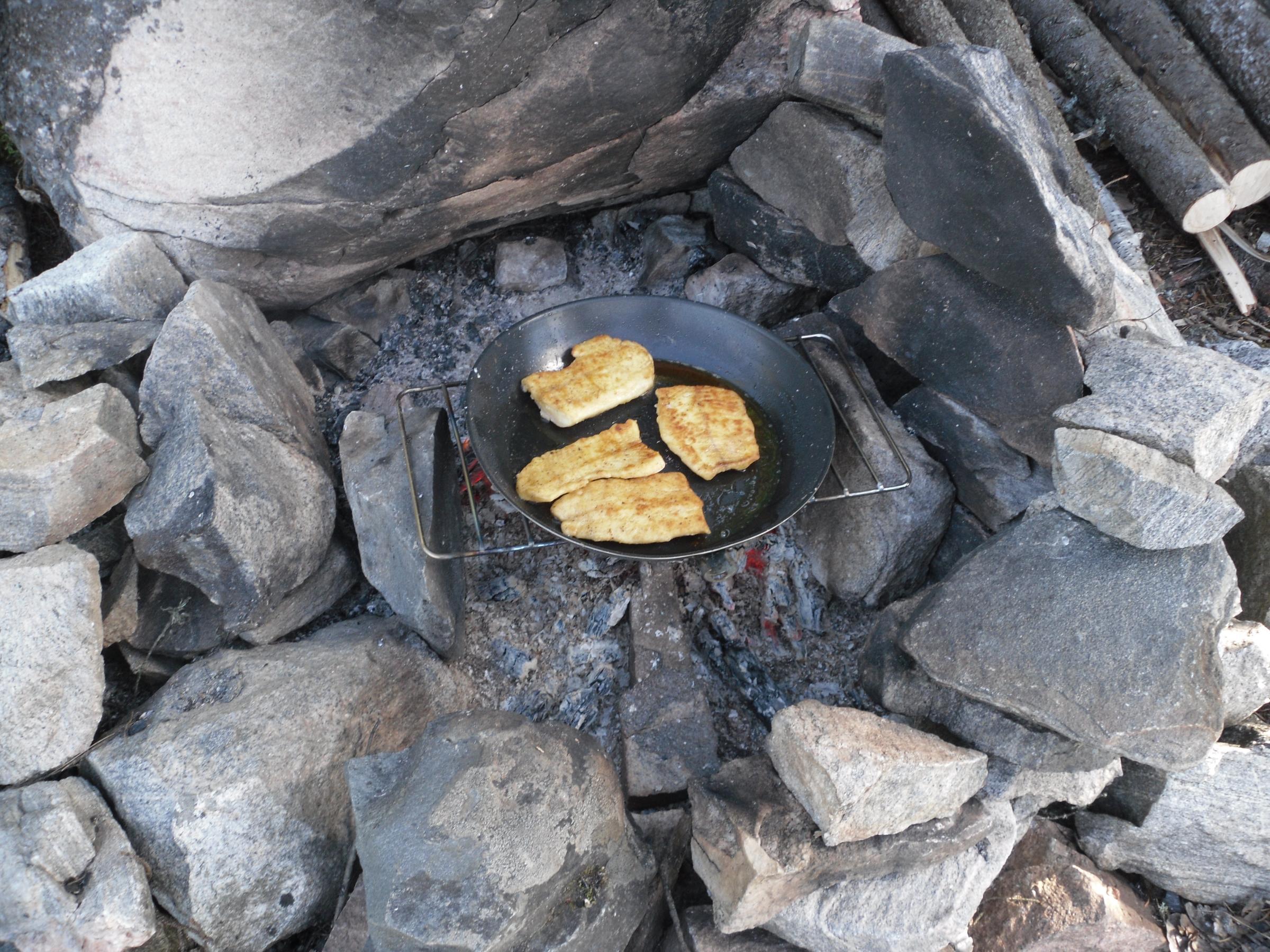
The benefits from a screen, reflector and thermal mass can be achieved in any outdoor cooking setup, though, permanent structure or temporary.
Even just a couple extra logs set up on the windiest side can help reduce the amount of time it takes to prepare a meal over a fire or coals. It can also help make sure food is still hot and warm when it’s served, like turning off the ceiling fan over a dinner table while it’s being set.
Stone, thick timbers, brick, and things like a steel barrel or defunct metal washer or filing cabinet on one side of our fire, forming a right angle, or forming a three-sided semi-circle – ideally on the windy side – can help us with thermal mass or the equivalent of a debris hut of loose leaves.
The air space or mass warms, and forms a more oven-like environment on top of preventing the heat from being whipped away. As with a survival campsite reflector, they also help bounce heat on the foods we’re consuming.
It doesn’t even have to be a campfire. The methods can be applied with grills and rocket stoves as well. A rearward reflector or a heat sink like a tire can make our solar ovens more efficient and effective, too, and extend their useful seasons.
Even if a bug-out is the last thing on our minds, the decrease in time and increase in efficiency for when we want to cook outdoors instead of heating up the house can make a big difference.
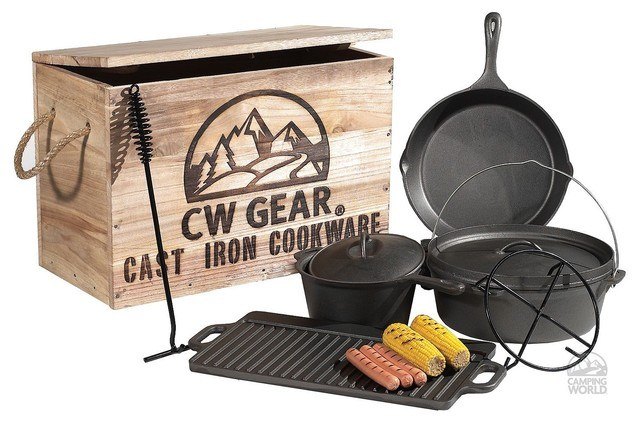
Cookware
Sometimes cookware gets its due, and sometimes not. When I do see cookware in various lists and articles, it seems to mostly be dedicated packing sets or cast iron.
I have family that will make pterodactyl noises if you touch their woks or cast iron with a steel scrubby. Maybe that’s less of an issue in other houses.
To avoid the scrubby, though, the non-ceramic-coated cast iron requires a fat to help foods not stick. Fats are one of the expensive, short-lived storage items for preppers. While they’re necessary (and another one that seems to not get their due as much as I’d like to see), using them as non-stick assistants seems painful to me.
Steel and copper cookware have big advantages, especially the ones that have nice, thick bottoms (helps heat efficiently and prevents hotspots in pans). They can be hit with steel wool, and with a metal handle can go from fire to stovetop to solar oven. They don’t need the oiling and oober-drying and maintenance care the cast iron gets in my family, even the small camping Dutch ovens.
But they do still need an oil if you’re going to be doing something like eggs or potatoes.
Because of that, I have started using a stone-lined pan set that came home as a nothing present (he lived). Mine’s Crofton (if it’s inexpensive, tell me; if it’s expensive, hold your tongue so he continues to live).
They’re sturdy and oven safe, they have nice metal handles that are well attached, and those images of just sliding an egg out … yeah, that’s legit, at least with my set. Even oopsed rice just oozes off with a two-minute soak and a regular sponge.
*Tip from the candy makers: Fill an “oopsed” pot or casserole dish with water and boil it while scraping if it’s going to need more than just a little time and a little elbow grease. Smarter, not harder. At least, while water is cheap and copious.
The only thing I’d change is that the pans lack the quarter-inch of solid metal base that creates an even cooking surface. The flip side to that, though, is that it’s far lighter.
Metal baking pans have also become obsolete in my kitchen. Oh, they’re stocked back in case of breakage, but I largely do my roasting and baking in Corning and Pyrex, and a fair bit of it in $3 glass bread pans.
That’s about me being lazy.
I can use that steel wool on them without removing coatings and then fighting rust. Most of the time, I don’t even need steel wool.
Most of the time, things I’d have once soaked or boiled on the stove because even Bissel the Labrador couldn’t get the baked-on goo off, I don’t even pre-wash at all. They go straight in the dish washer.
That means that in a crisis, I’m spending less energy/labor on cleaning up, I can conserve more fats and oils for consumption instead of lubrication, and I use less water and cleaning soap.
They also cross-purpose between various cooking methods, and since they’re not metal, they’re non-reactive when I have recipes for cheese that don’t like steel or aluminum or copper.
Cooking in Disasters
Big or small, some disposables are good. And I’ve been poor. I understand that for some, a good casserole dish and a single good pan require the same budgeting as Aimpoints and gennies. Prioritize these, as with anything else, although the daily-life ease the cookware offers may make them worth asking for as a holiday or birthday present.
With any luck, some of the inexpensive food-heating and water-heating options listed above can help with the budget, opening up the ability to build or source other things, or just with creating redundancy in our systems.
Other self-sufficiency and preparedness solutions recommended for you:
The vital self-sufficiency lessons our great grand-fathers left us
Knowledge to survive any medical crisis situation
Liberal’s hidden agenda: more than just your guns
Build yourself the only unlimited water source you’ll ever need
4 Important Forgotten Skills used by our Ancestors that can help you in any crisis



